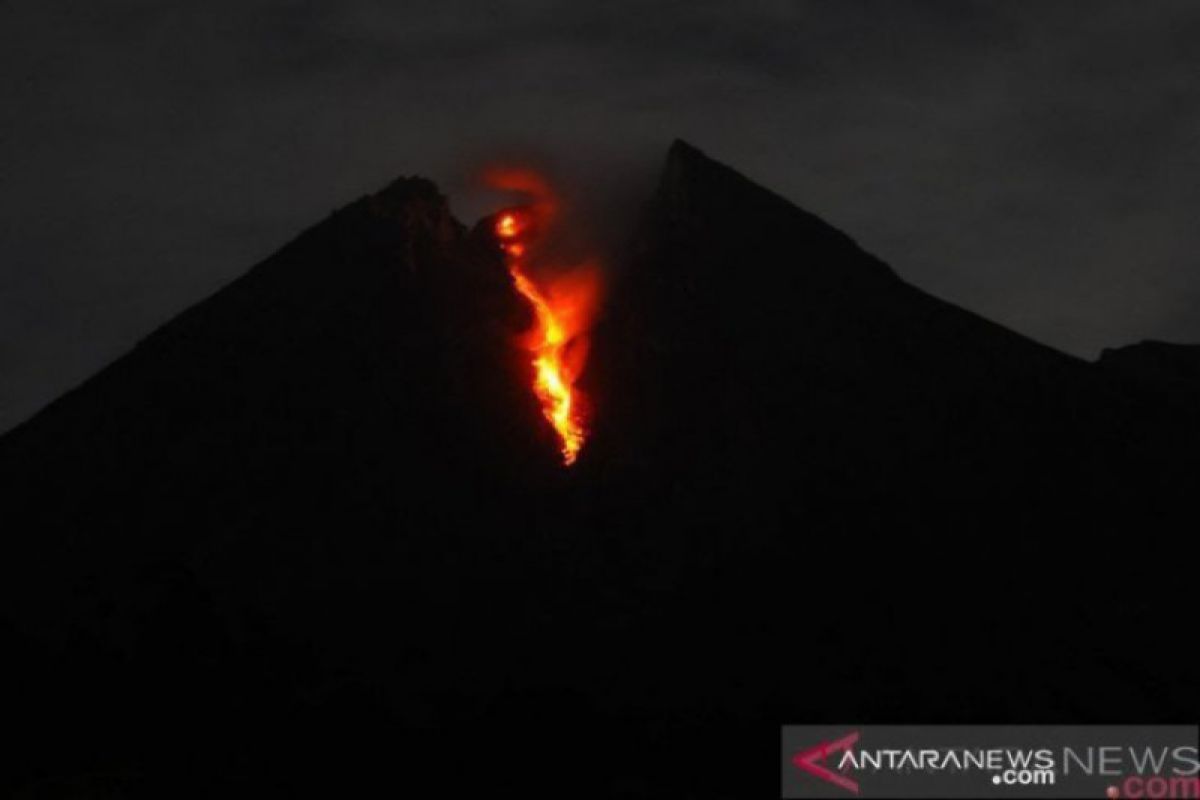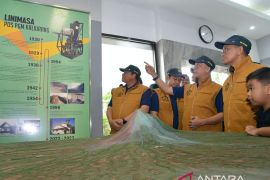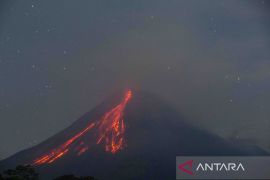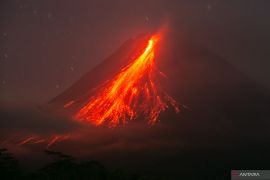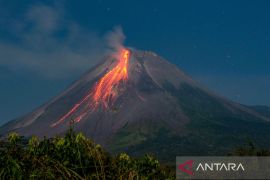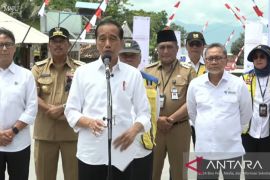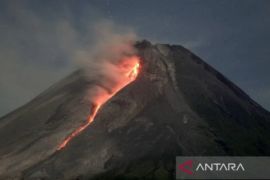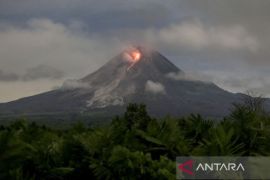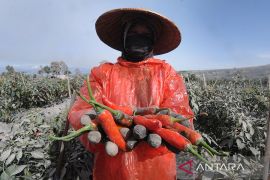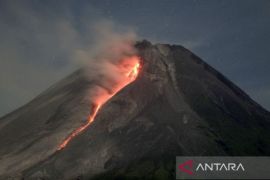BPPTKG Head Hanik Humaida noted in his official statement that the five lava collisions observed during CCTV monitoring from 00:00 to 00:06 WIB had a sliding distance of 250-900 meters.
Humaida reported that along with lava collisions, the BPPTKG also recorded earthquake avalanches 22 times, with an amplitude of 3-55 mm, and lasting for a duration of 10-91 seconds.
Meanwhile, visual observations indicated that thin, white smoke of medium to thick intensity under weak pressure was observed to rise from the crater to a height of 80 meters from its peak.
Weak wind blew over the mountain to the southeast and south directions. The air temperature ranged between 17 and 21.8 degrees Celsius, while the air humidity lay in the range of 67 to 85 percent, and air pressure of 628.5-708.7 mmHg.
The BPPTKG has, until now, kept the status of Mount Merapi unchanged at Level II, or Alert, and in the interim, has advised against conducting climbing activities apart for investigation and research on disaster mitigation.
The BPPTKG has called on residents to avoid undertaking activities within a three-kilometer radius of Mount Merapi's summit.
In connection with the extent to which the hot clouds from Merapi will dissipate, the BPPTKG has called on those living in the Kali Gengenai area of the Mount Merapi eruption to not believe any information whose source is unclear and keep abreast of araendol to raise awareness.
Moreover, the community was urged to not be hassled by issues pertaining to local government officials and to directly seek information or any clarification from the Mount Merapi Observation Post or BPPTKG office, or through the BPPTKG social media account. EDITED BY INE
Translator: Eliswan Azly
Editor: Fardah Assegaf
Copyright © ANTARA 2019
